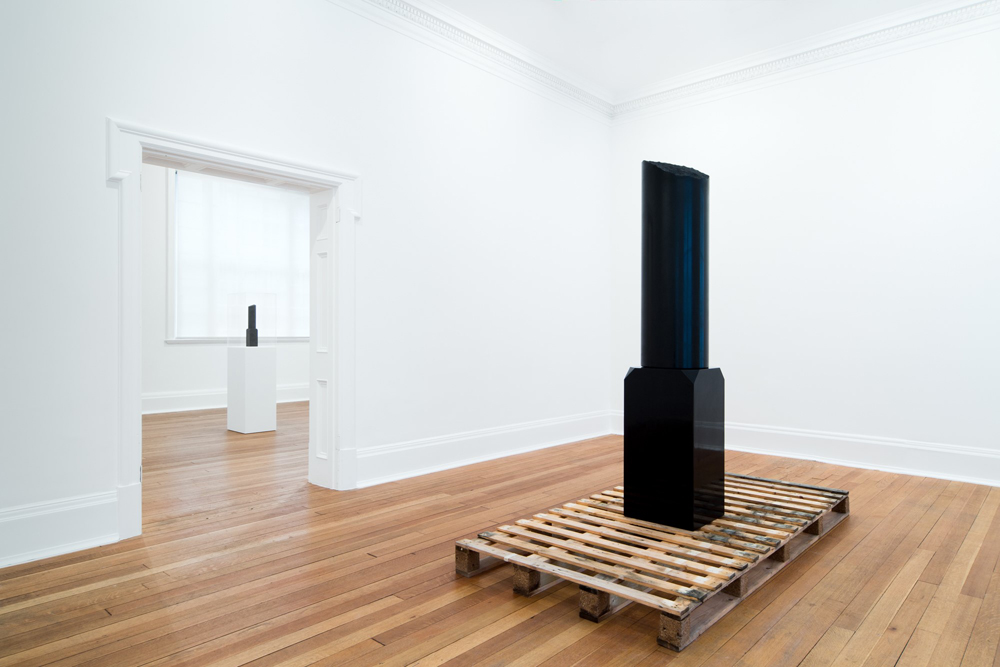- By
- Hannah Cross
HIGHLIGHTS FROM FRIEZE LONDON 2014
Frieze Art Fair has become more than just a fair—it is now the center from which spirals a plethora of activity as London institutions and galleries launch their biggest exhibitions of the year. Alongside these are some of the biggest auction sales, designed to catch the attention of the international art community that descends to purchase and absorb the city’s latest offerings.
This year, it began the week before the fair opened, with Tracey Emin’s “The Last Great Adventure Is You” at White Cube, Bermondsey. A delicate and vulnerable show featuring bronzes and ink drawings, it was a refreshing and poetic show by Emin, the infamous YBA. The countdown to Frieze London continued with Walead Beshty’s “A Partial Disassembling of an Invention Without a Future: Helter-Skelter and Random Notes in Which the Pulleys and Cogwheels Are Lying Around at Random All Over the Workbench” at the Curve in the Barbican, followed by one of America’s current favorites, Glenn Ligon, and his show “Call and Response” at Camden Arts Centre.
Hot on the heels of these big-name exhibitions was new work by Hollywood director and critically acclaimed artist Steve McQueen at Thomas Dane. Richard Tuttle unveiled his most ambitious commission to date in the Turbine Hall at Tate Modern alongside his retrospective at the Whitechapel Gallery. Marian Goodman chose the Frieze preview evening to launch her new London gallery with a solo presentation by Gerhard Richter, and Frith Street Gallery celebrated twenty-five years with a dinner at its old space and an exhibition by Raqs Media Collective at its Golden Square gallery.
The fair itself felt different this year, somehow smaller and yet more spacious, following the tent’s redesign by Universal Design Studios. Live art was a dominant theme and punctuated the fair with surprise and humour; in particular a group of young people enacting a roving performance by James Lee Byer called Ten in a Hat, courtesy of Michael Werner Gallery. Hauser & Wirth’s stand featuring the sleeping warden received a lot of attention, as well as the United Brothers from Iwaki, Japan, offering soup made from vegetables from Fukushima. Carsten Höller’s colorful and playful Gartenkinder went as far as to employ child minders as it encouraged pint-sized fairgoers to climb in, on, and around the work, allowing the grownups to set about the serious business of buying art. As part of the Frieze Projects commissions, American artist Isabel Lewis presented a series of “occasions” at the Old Selfridges Hotel in collaboration with the ICA. A leafy-green “occasion” with a live DJ set and performance by Lewis brought all the young arts and fashion crowd together in two four-hour-long evening sessions.
Focus (previously Frame), featuring smaller galleries and project spaces, is usually the most interesting section of Frieze London. The Allied Editions stand always gets a lot of attention and this year was no different, being the only stand in the whole fair where you could walk away with art under your arm for less than £1,000. Of further note was Mary Mary Gallery, from Glasgow, which showcased beautiful new ceramic works by up-and-coming, dynamic artist Jesse Wine. Arcade sold a beautiful textile piece by Caroline Achaintre, a rising star whose work is now on display at Tate Britain, while Workplace gallery from Gateshead, had a bold solo presentation of work by Eric Bainbridge.
Frieze London 2014 proved to be a success for many, drawing big names from across the pond and spotlighting how galleries have learned to reinvent or take themselves with a pinch of salt. Subtle though these shifts may be in some cases, it is refreshing to see the old making space for the new.
Image courtesy of the artist and Thomas Dane Gallery, London.
- By
- Hannah Cross


















